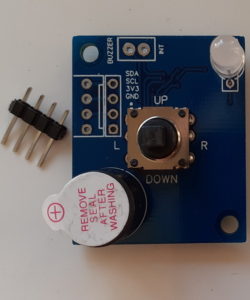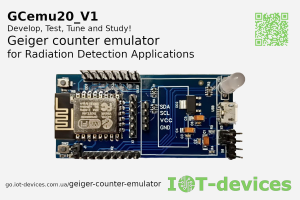We’ve just released our first Android app – the Sound GGreg20_V3 App. This Sound GGreg20_V3 App companion (hereinafter referred to as the App) for the DIY Geiger counter module GGreg20_V3 was developed by the IoT-devices team to provide a quick and convenient way to get started.
Our Idea
Over the past few years, we’ve encountered situations where a Geiger counter needed to be used simply and quickly, without specialized knowledge or experience, without connecting additional devices, and without complex communication. Of course, you could just count pulses and time them with a stopwatch. But we thought, why not create a convenient app for this? And we did.
Benefits of Using GGreg20_V3 with This App
- Affordable Solution: No need for a controller like Arduino, ESP8266, ESP32, or Raspberry Pi.
- Ease of Use: No programming skills required.
- Wireless: No need to solder or connect cables.
- Quick Start: No need to search for or pair a new device.
- Broadcasting: If needed, one Geiger counter can be used simultaneously by many users.
Who This App Is For
While this app isn’t precise and, paired with GGreg20_V3, isn’t a finished device, users who can’t or don’t want to program can immediately use the GGreg20_V3 module simply by powering it and installing this app.
But remember, this is only an educational, demonstration, and testing app for beginners. Please choose appropriate tools for appropriate tasks.
This app is also convenient for quickly testing the module’s functionality, for example, when picking it up at the post office.
For Accurate Measurements
If you’re looking for accurate and reliable measurements using the GGreg20_V3 module, we recommend checking out our other companion app for GGreg20_V3, which is about to appear on Google Play. That app uses a controller with Bluetooth as the data transfer channel between the module and the smartphone.
Please note: the BLE app requires significantly more work on the DIY project – at least knowledge of ESPHome, BLE Server, and controllers like ESP32 or Raspberry Pi Pico W, etc.
How It Works
GGreg20_V3 users only need the module powered (according to documentation) and this smartphone app. Wireless data transfer from the GGreg20_V3 module to your smartphone occurs via sound signals from its built-in buzzer. The app filters sounds captured by the smartphone’s microphone, recognizing only those that match the signals from the GGreg20_V3 buzzer.
Known Limitations
Using the wireless audio channel can lead to false readings or inaccuracies in noisy environments.
Specifically:
- Although the GGreg20_V3 Geiger counter can register all pulses that tubes like J305, SBM20, or LND712 are capable of in high-radiation conditions, this app has a significant limitation. To differentiate pulses, an artificial 70-millisecond delay between the pulses the app perceives had to be implemented. This means the app can correctly process radiation levels only up to 850 CPM (or 3 uSv/hour). This is entirely sufficient for normal household conditions but will be insufficient in the event of a nuclear disaster.
- While the app effectively filters events only of a specific frequency, there’s a problem of signal clutter, for instance, from a nearby conversation. In such cases, the signals overlap, and the app ignores relevant pulses.
- We’re also aware of an echo problem with relevant signals. This occurs in enclosed spaces. You can see this effect in the video in the app description on Google Play, where the buzzer pulses once, but the app sometimes counts them twice, likely due to echo. (For shooting this video, we use a lightbox where the echo occurs.)
Important Note
This app, like the GGreg20_V3 module, is not a precise measuring device. It’s intended for personal use, hobbies, learning, and creative experiments, not as a finished product. It’s created for DIY electronics enthusiasts.
Keywords
Geiger counter, GGreg20_V3, Ionizing Radiation, Companion Application, Conversion Factor, Geiger Muller Tube, DIY, IoT, Radiation Measurement, Embedded Electronics, Electronics


